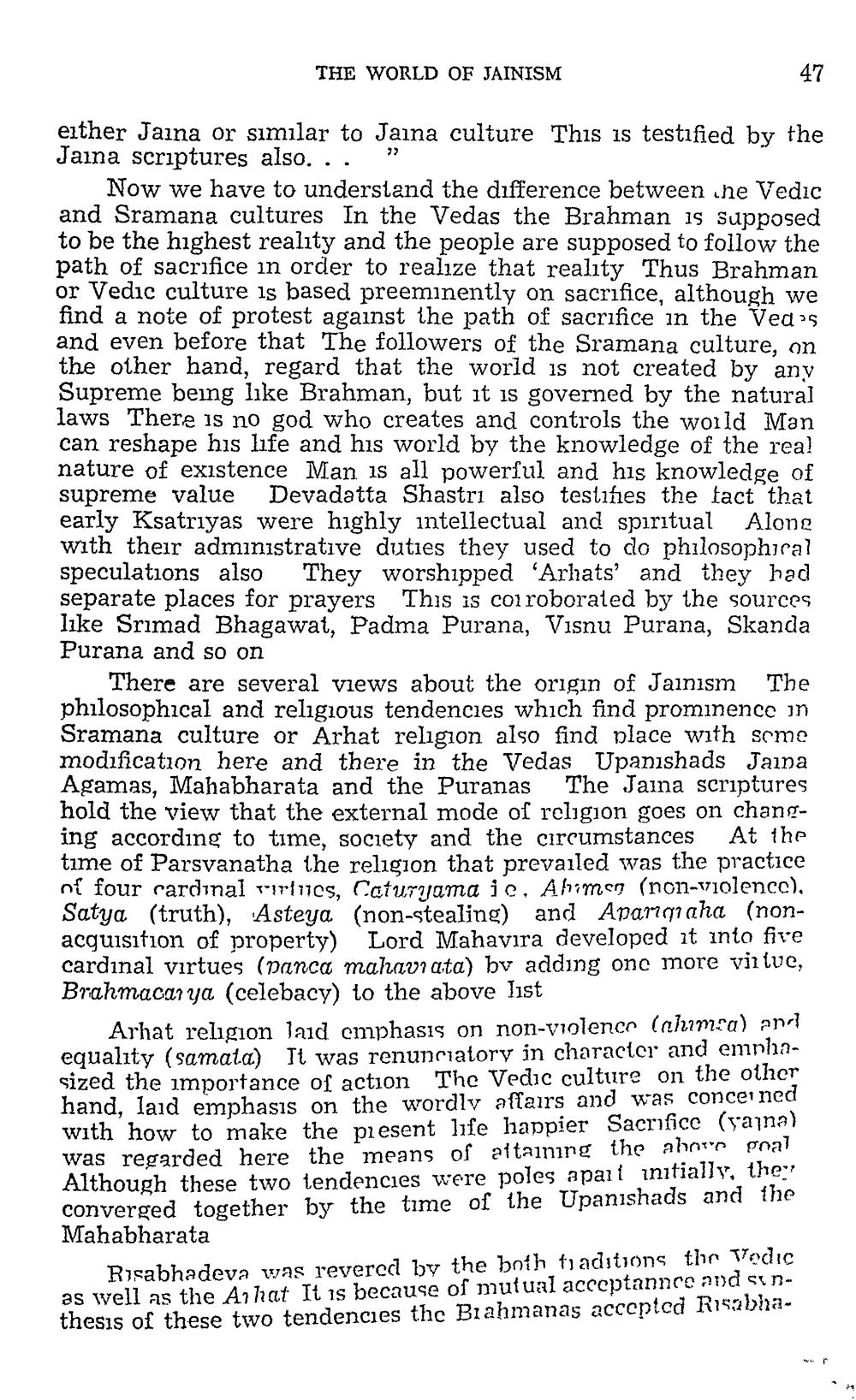________________
THE WORLD OF JAINISM
47
either Jaina or similar to Jaina culture This is testified by the Jaina scriptures also. .
33
Now we have to understand the difference between .he Vedic and Sramana cultures In the Vedas the Brahman is supposed to be the highest reality and the people are supposed to follow the path of sacrifice in order to realize that reality Thus Brahman or Vedic culture is based preeminently on sacrifice, although we find a note of protest against the path of sacrifice in the Ved's and even before that The followers of the Sramana culture, on the other hand, regard that the world is not created by any Supreme being like Brahman, but it is governed by the natural laws There is no god who creates and controls the world Man can reshape his life and his world by the knowledge of the real nature of existence Man is all powerful and his knowledge of supreme value Devadatta Shastri also testifies the tact that early Ksatriyas were highly intellectual and spiritual Along with their administrative duties they used to do philosophical speculations also They worshipped 'Arhats' and they had separate places for prayers This is corroborated by the sources like Srimad Bhagawat, Padma Purana, Visnu Purana, Skanda Purana and so on
The
There are several views about the origin of Jainism philosophical and religious tendencies which find prominence in Sramana culture or Arhat religion also find place with some modification here and there in the Vedas Upanishads Jaina Agamas, Mahabharata and the Puranas The Jaina scriptures hold the view that the external mode of religion goes on changing according to time, society and the circumstances At the time of Parsvanatha the religion that prevailed was the practice of four cardinal virtues, Caturyama ie. Ahimen (non-violence), Satya (truth), Asteya (non-stealing) and Aparqaha (nonacquisition of property) Lord Mahavira developed it into five cardinal virtues (panca mahaviata) by adding one more virtue, Brahmacarya (celebacy) to the above list
Arhat religion laid emphasis on non-violence (ahimsa) and equality (samata) It was renunciatory in character and emphasized the importance of action The Vedic culture on the other hand, laid emphasis on the wordly affairs and was concerned with how to make the present life happier Sacrifice (vana) was regarded here the means of attaining the above goal Although these two tendencies were poles apart initially, they converged together by the time of the Upanishads and the Mahabharata
Risabhadeva was revered by the both traditions the Vedic as well as the Ahat It is because of mutual acceptance and sunthesis of these two tendencies the Brahmanas accepted Risabha




